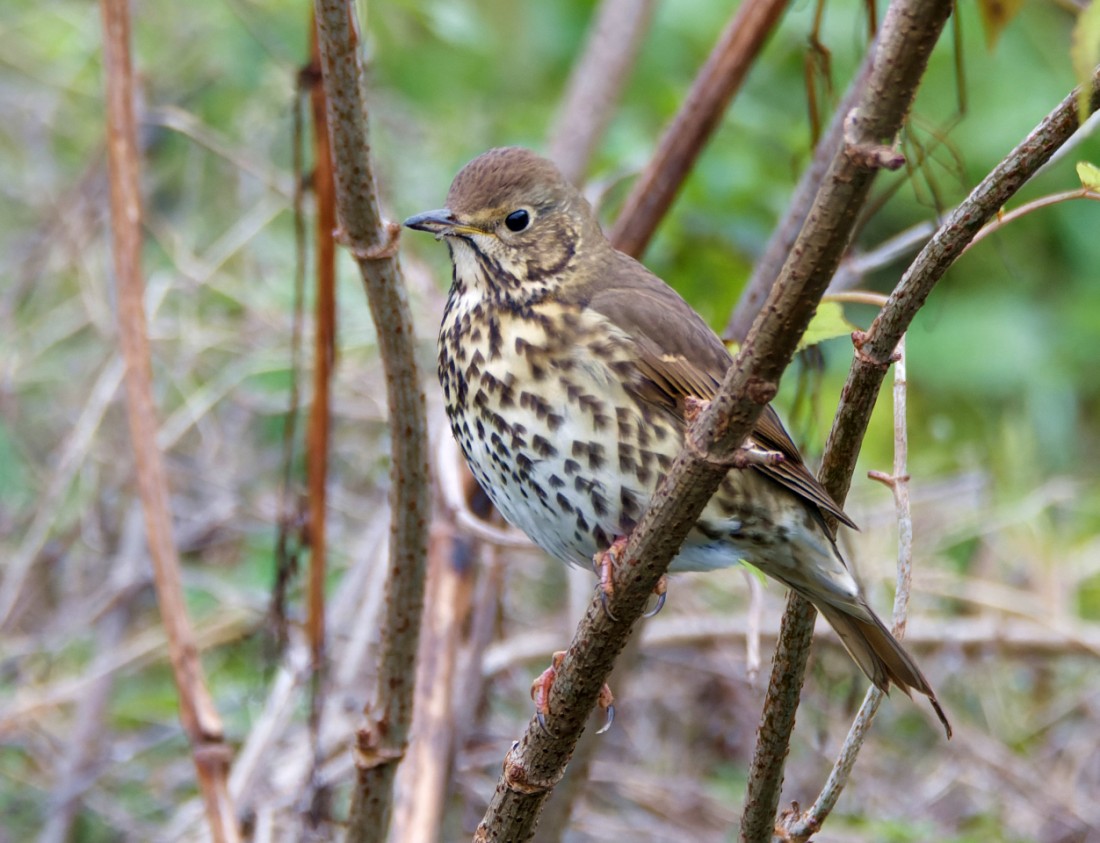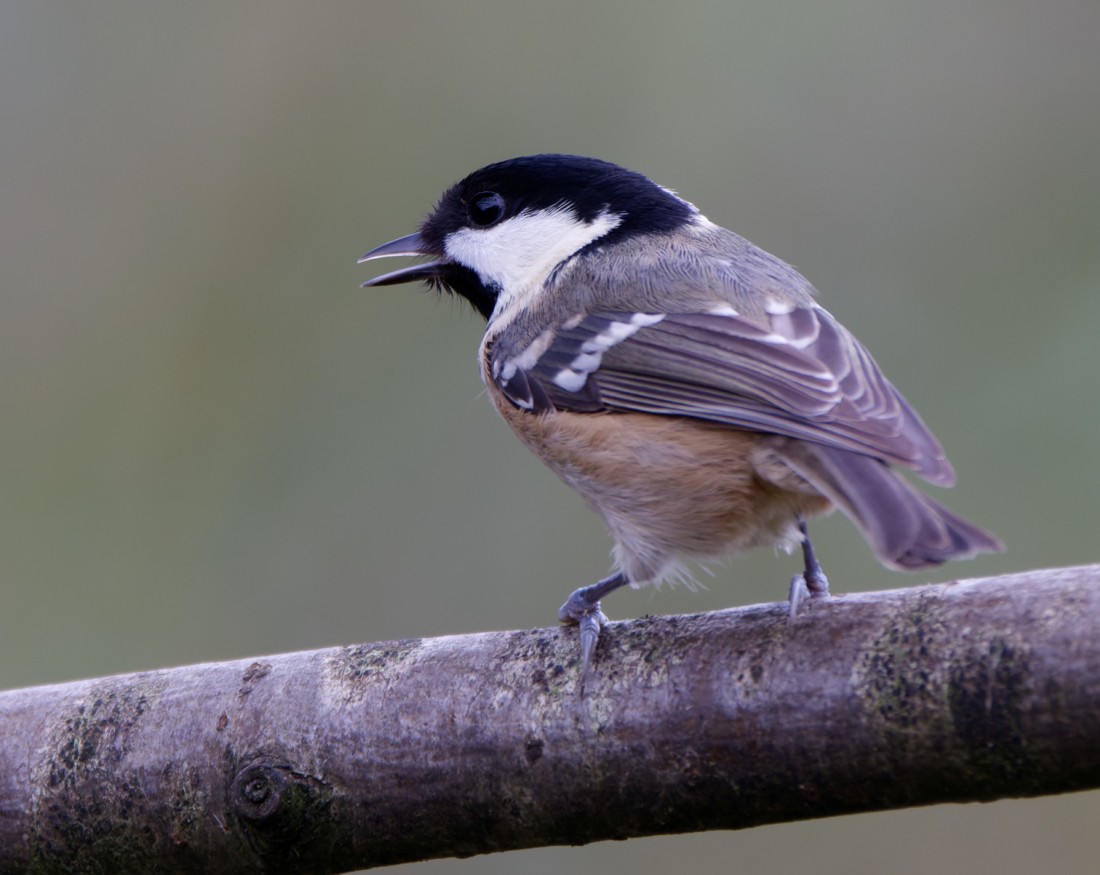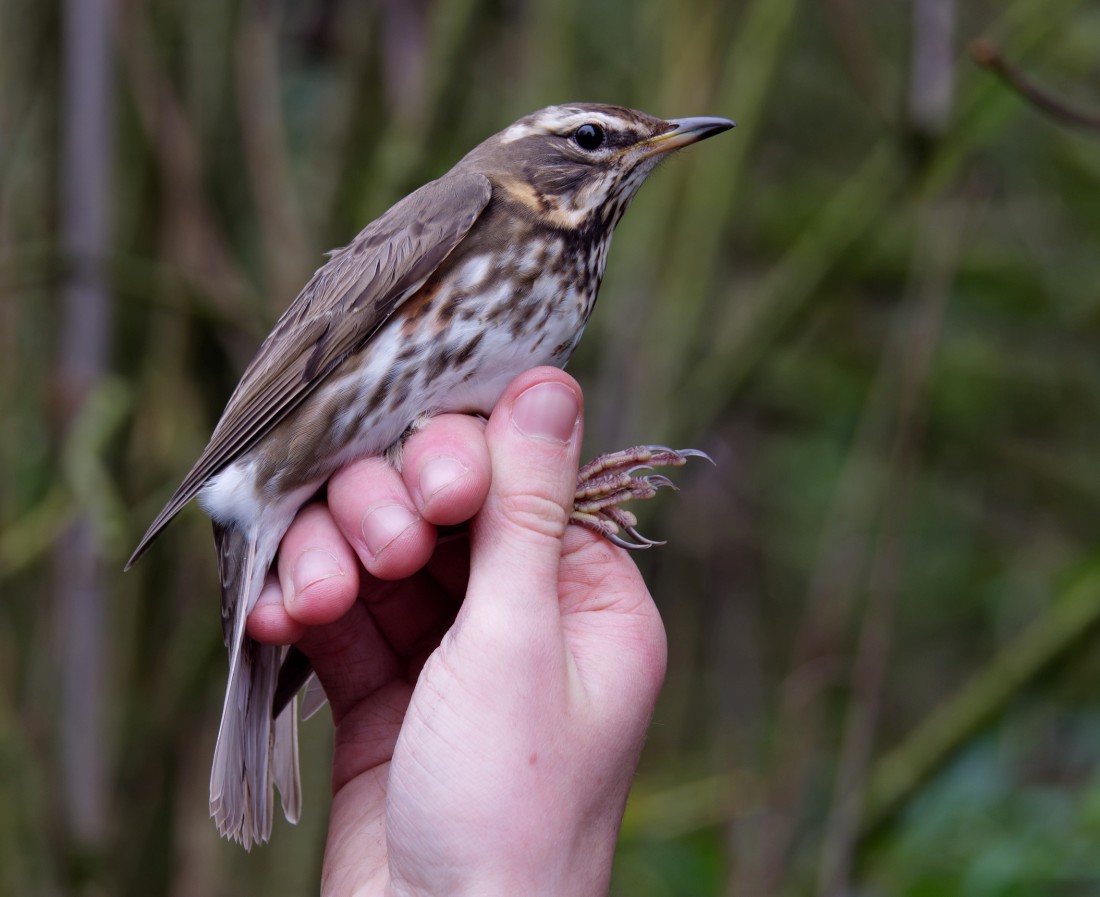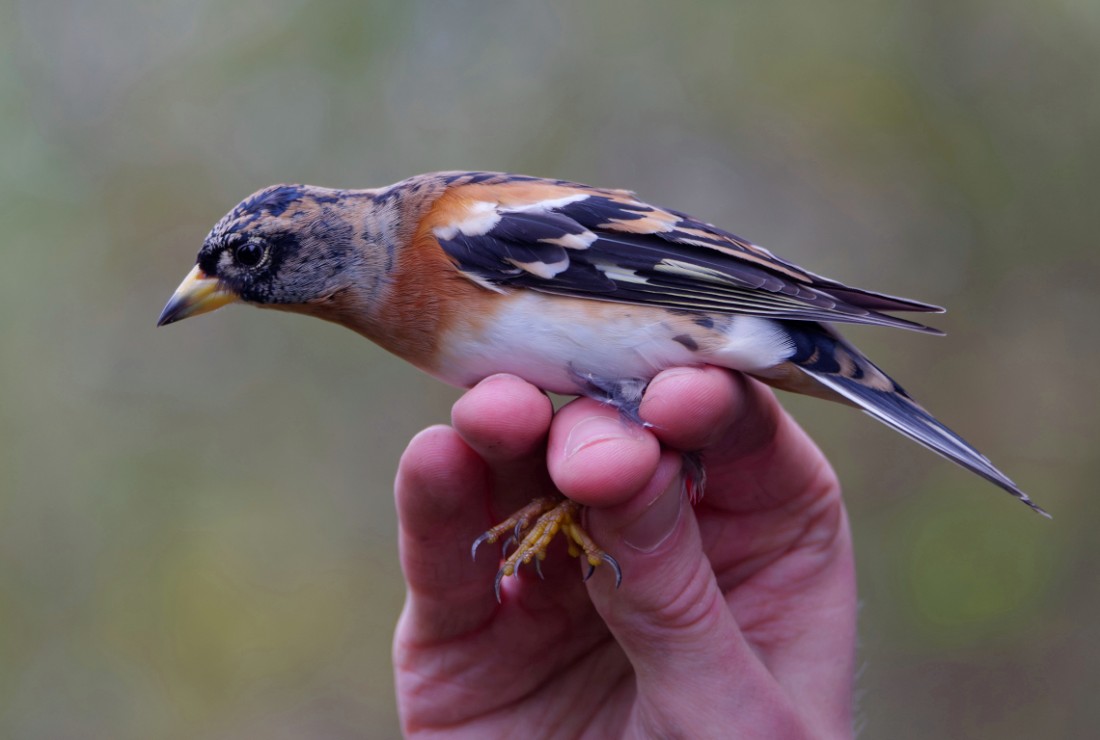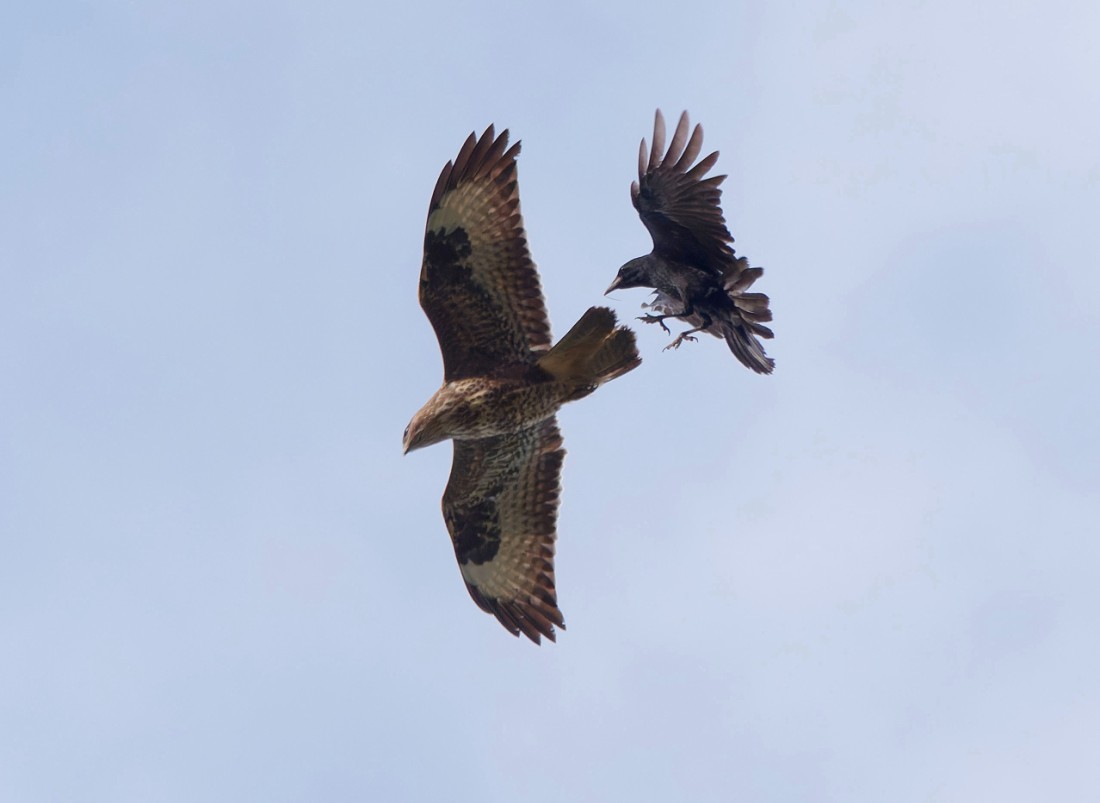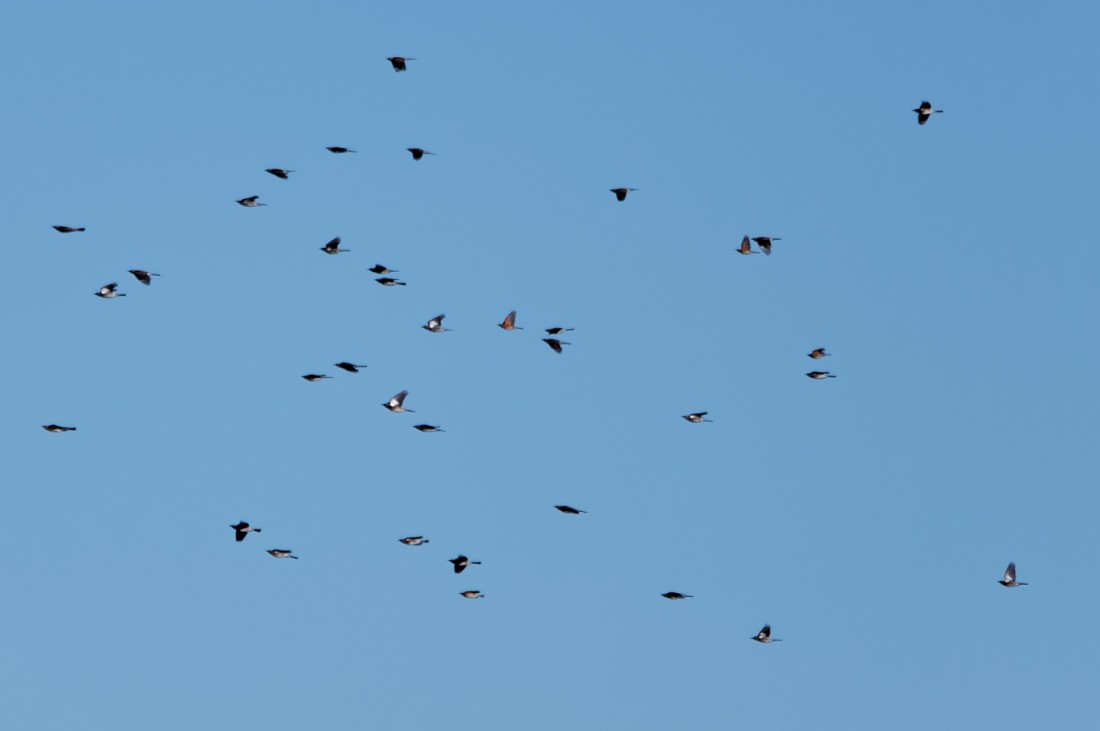Woolston Eyes Monthly Sightings
2021-11-30
Early on, Dan Owen and I started by scanning from the Morgan Hide before taking advantage of a break in the weather to count the finches around No.3 bed. The combination of the seed crop and feeding stations, always pulls in plenty of seed-eaters and totals included: 1 Siskin, 1 Lesser Redpoll, 5 Bramblings, 5 Linnets, 200 Chaffinches, 130 Greenfinches and 40 Goldfinches. Other birds of note included 1 Green Sandpiper, 1 Kingfisher, a few Fieldfares and Redwings and a couple of Goldcrests. Then, when the weather finally cleared, we walked on to No.4 bed where we were greeted by a perched pair of Ravens, with another on to of a phone mast just to the north of the bed. It wouldn’t be surprising if Ravens turned out to be the next species to be added to the Reserve’s breeding list. The new wetland is looking better by the week and held 1 Jack Snipe, 2 Common Snipe, 260 Teal, 100 Mallard, 71 Gadwall and 53 Coot, while the Loop held a single drake Pintail.
Photo of a Blue Tit!
Cheers David
Submitted by: David Bowman
2021-11-25
Some additional records for today; 446 Tufted Duck, 8 Grey Heron, 1 Peregrine on the viaduct, 3 Goldeneye, 258 Teal, 2 Water Rail (loop), 8 Herring Gulls (new wetland) Also 2 Roe Deer on No.1 bed, later seen again on the east bank of No.2 bed (presumed to be the same ones).
Submitted by: Dave Hackett
2021-11-25
After 43 years of recording birds on the Reserve it gets ever harder to add a new species to the list. So, Dan Owen and I were delighted to watch a Glossy Ibis arrive from the north-east and fly steadily westward across the No.3 bed lagoon before disappearing from sight. Glossy Ibis breed in heronries across southern Europe, feeding in shallow water on frogs and small fish. There has been a recent surge in breeding numbers in Southern Spain and particularly in Coto Donana, with a resultant increase in UK records. It provided us with our 245th species ever for the Reserve and the 149th of this year. With that under our belts we wandered down to Bollin Point, having close views of a Siberian Chiffchaff (one of two ringed in the past week), as well as a Woodcock and 2 Goldeneyes. Back in No.3 bed, the two Marsh Harriers, which have been around, appeared and at last we were able to get record shots of the wing-tagged individual, which will enable us to get detailed information on when and where it was originally ringed and tagged. Finally, we did a quick circuit of No.4 bed, finding 3 Jack Snipe, 13 Common Snipe, an over-flying male Goosander and a hunting Peregrine. Quite a morning! Record shot of the Glossy Ibis Cheers David
Submitted by: David Bowman
2021-11-23
Despite the slowing down of migration, the last couple of visits have produced a nice variety of birds. On Saturday, highlights included a couple of Jack Snipe among the Common Snipe on No.4 bed, two drake Pintails with the hundreds of more common wildfowl on the same bed and a Marsh Harrier, a Green Sandpiper and 10 Bramblings on No.3 bed. The latter were feeding under the Morgan Hide feeders, while about 100 each of Chaffinch, Greenfinch and Goldfinch were also present. This morning the 10 Bramblings were still present, along with a couple of Siskins, while the 7 Water Rails around the bed suggested that we’d had an overnight influx, typical of a clear, moonlit night and a single Woodcock along one of the paths might also have been a nocturnal arrival. Small numbers of Pink-footed Geese were still passing over though thrushes were limited to just 30 Redwings and 7 Fieldfares which dropped in to feed. Perhaps most interesting was the arrival of two Marsh Harriers, one of which had a red wing-tag on the right wing. Although we weren’t able to read the tag number, we’re fairly sure that this is the bird which has been seen regularly on Chat Moss and is thought to have been ringed as a juvenile earlier this year in Norfolk. Photo of a Song Thrush Cheers David (with Dan Owen, Helen Wynn, Al Warford, Dave Steel, Sue Haddock and Brian Baird).
Submitted by: David Bowman
2021-11-16
On a calm, overcast morning the southward passage of most birds has slowed to a trickle, as autumn moves steadily towards winter. Still plenty of variety around, though, with 2 Green Sandpipers, 3 Bramblings, 3 Snipe, 2 Water Rails and a Kingfisher all showing well from the Morgan Hide. By mid-morning it was time to do a circuit of No.3 bed, with our Assistant Warden, Lizzie Hill and Becky Longden, planning our winter coppicing programme. Keeping a good mix of old, dead wood (for nest hole excavation) and new growth (which is rich in insect food) is critical for keeping the habitat suitable for our important population of the rapidly declining Willow Tit. Photo of a Coal Tit Cheers David
Submitted by: David Bowman
2021-11-14
This link is to a short video showing some of the birds over the past week. It includes: a Jackdaw flock, male and female Wigeon, a few of the many thousands of Fieldfares passing over, Greylag Geese, male and female Shoveler, a calling Dunnock, some of the activity at the Morgan Hide feeders with Greenfinches, Nuthatch, male and female Great Spotted Woodpeckers, Brambling and Jays, then Kingfisher, Green Sandpiper, drake Pintails and a Marsh Harrier. To watch David’s video CLICK HERE… or cut and paste the following link into your browser.
https://youtu.be/Pp4rzjybMjQ
Cheers David
Submitted by: David Bowman
2021-11-13
It was an unseasonally warm autumn morning, with plenty of insects on the wing. Pink-footed Geese were on the move from first light, with 13 small skeins, totalling 1,100, all heading for the east coast. The Morgan Hide feeding station pulled in three Bramblings, along with scores of Greenfinches, Chaffinches and the odd Willow Tit. The Green Sandpiper, which visited the Morgan Hide scrape several times, was wearing a colour ring and was almost certainly from the No.3 bed ringing programme. Small groups of Redwings were also occasionally dropping in, along with the odd Fieldfare. A mid-morning walk onto No.4 bed produced a nice couple of drake Pintails, a handsome duck which was once common on the Reserve but has become scarce as the numbers wintering on estuaries in the north-west have declined dramatically. Finally, to cap a lovely morning, a Marsh Harrier arrived scatter all the wildfowl, including over 100 Shovelers and 250 Teal. Photo of a Redwing, ringed by Dan Owen Cheers David (with Helen Wynn, Brian Baird and David Fairclough)
Submitted by: David Bowman
2021-11-11
At this time of year birds are taking full advantage of the rich crop of berries, fruits and seeds on No.3 bed, with most of the surrounding farmland offering only meagre fare. Finches were most in evidence, with at least 10 Bramblings, 4 Lesser Redpolls, 15 Linnets, 120 Greenfinches, 100 Chaffinches and 80 Goldfinches roaming around the bed, while several hundred Redwings were hoovering up the last of the haws from the extensive stands of Hawthorn around the perimiter of the bed. While the finch flocks will continue to grow as winter arrives, most of the Redwings will move on as soon as they’ve cleared the last of the haws, which won’t take long. They’ll then start to feed on open farmland or by foraging for insects by turning over the leaf litter in more wooded areas.
Photo of a male Brambling ringed by Dan Owen
Cheers David
Submitted by: David Bowman
2021-11-06
Today it was a combination of a visible migration session on No.1 bed combined with the WeBS Count at Bollin Point. 7 Jack Snipe, 5 Woodcocks and 4 Common Snipe were around the bed, while 5 Golden Plover were with the Lapwing flock on fields to the north. Continental thrushes were moving in good numbers, along with a few Pink-footed Geese and we ended up with 1,750 Fieldfares, 1,600 Redwings and 400 Pink-feet by lunchtime. At Bollin Point 3 Goldeneyes and 3 Wigeon were among the 500 or so commoner water-birds loafing on the Ship Canal. The most memorable spectacle, however, came when a large juvenile female Peregrine flushed 2 Grey Partridges 150 Pink-feet, 50 Stock Doves and around 400 Corvids (mainly Rooks and Jackdaws) from the stubbles to the south. Photo of a Carrion Crow mobbing a Buzzard. Cheers David (with Dave Steel and Helen Wynn)
Submitted by: David Bowman
2021-11-04
Another superb morning for visible migration from No.3 bed. It was a day with continental thrushes passing through the north-west in large numbers. While we’ve already had some excellent counts of Redwings, Fieldfares have been unusually late in arriving - until today. By the end of the morning 2,500 Fieldfares and 1,900 Redwings had passed over, with many more dropping in to feed around the bed. With so many thrushes around it was no surprise when Dan Owen picked out a late Ring Ouzel with feeding Redwings. Equally, in recent years large thrush movements have regularly coincided with the arrival of a male Merlin, which likes to hunt Greenfinches at the Morgan Hide feeding station and the same held true today. Unusually for us, Starlings were moving on the same vector as the thrushes, suggesting an influx from Eastern Europe. Late autumn/winter can see millions arrive from as far as Siberia and in all, 1,050 passed over. It was good for finch movement, too, with 60 Bramblings and 100 Siskins, quite a few of which dropped in around the bed. Other counts of note included 25 Skylarks, 580 Pink-footed Geese and 1,500 Woodpigeons. An indication of the scale of the recent Woodpigeon movements came from Portskewett, in Gwent, yesterday, when 194,000 flew south-west over the morning! Record shot of one of the many thrush flocks, Cheers David (with Dan Owen)
Submitted by: David Bowman
2021-11-02
After the previous few days of torrential rain, it was good to arrive under largely clear skies, with the lightest of southerly breezes. These are the conditions which can trigger massive movements of Woodpigeons, particularly if there has been an influx from Scandinavia due to the failure of the acorn crop. Continental Woodpigeons can then flood across the UK and are thought to be heading to Iberia to to feed in the extensive Oak and Beech forests. Sure enough, 1,000 passed over the Morgan Hide in the first few minutes, with another 8,000 to follow. I was then involved in a meeting with Gavin Thomas and his colleagues from the RSPB, doing a habitat suitability assessment of No.3 bed for the rapidly declining Willow Tit. This will enable us to plan our future management work, though it is pleasing to report that No.3 bed was assessed as being in excellent condition for a species which has very specific habitat requirements. This is testimony to the work we have collectively done over many years, though there is much more to still to do. The link is to a brief video showing a few of the Woodpigeons passing over this morning, along with Little Egrets and other species from the past few days.
To watch David’s video CLICK HERE… or cut and paste the following link into your browser.
https://youtu.be/j0jiyaIn2X4
Submitted by: David Bowman



